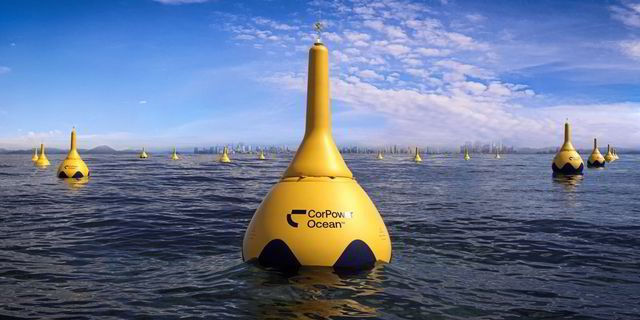Blue Renewable Energy
- Susanne Wedin-Schildt

- Apr 24, 2024
- 3 min read
Updated: Mar 26

Blue Renewable Energy encompasses energy production methods that harness natural resources from the marine environment. This includes wind, wave, tidal, ocean current, and ocean thermal energy conversion (OTEC). These technologies harness the power of the sea to generate electricity, offering a sustainable alternative to fossil fuels.
Why Care?
Sustainable Energy Source: Blue renewable energy provides a cleaner, more sustainable alternative to fossil fuels, reducing greenhouse gas emissions and combating climate change. Moreover, it is predictable, offers high energy density and has a reduced impact on our landscape.
Energy Security: It diversifies energy sources, contributing to global energy security and reducing dependence on imported fossil fuels.
Economic Development: The development of blue energy technologies creates jobs and stimulates economic growth, particularly in coastal communities.
Ocean Health: Harnessing ocean energy has a relatively low environmental footprint, helping to preserve ocean ecosystems.
Exciting Aspects of Blue Renewable Energy
Innovative Technologies: From floating wind turbines, which can be deployed in deep waters, to advanced wave and tidal energy converters, the sector is at the forefront of technological innovation.
Energy Storage and Grid Integration: Advances in energy storage and grid integration are essential for managing the intermittent nature of ocean energy and maximizing its utility.
International Collaboration: The growing global interest in ocean energy has led to international collaborations, sharing knowledge, and developing common standards and practices.
Research and Development: Significant research is going into understanding environmental impacts, improving efficiency, and reducing costs, driving the sector forward.
Current research and development
Ocean holds a tremendous potential for generating clean renewable energy and fulfill 10% of the world's need for electricity. This can be achieved by extracting the power of tides and waves, utilizing thermal differences.
Capturing the Power of Tides:
Tidal Barrages: These are large structures built across estuaries that trap rising tides. As the tide falls, the trapped water flows through turbines, generating electricity. This mature technology has been around since the 1960s, but can impact ecosystems.
Tidal Turbines: Similar to underwater wind turbines, these capture the energy of moving tides with rotating blades that spin a generator. More flexible in placement than barrages, they have a lower environmental impact but are still under development.
Some of the leading companies in this field include-
Orbital Marine Power (UK)
Minesto (Sweden)
Ocean Renewable Power (USA)
Atlantis Resources (UK)
Verdant Power (USA)
Extracting Energy from Waves
Wave Energy Converters: These devices come in various forms, like oscillating buoys that move with the waves or long panels that move back and forth, transferring that motion to electricity generation. This technology is promising but faces challenges in withstanding harsh ocean environments. The following companies are leading in developing and commercializing this technology.
CorPower Ocean (Sweden)
Ocean Power Technologies (USA)
Mocean Energy (UK)
Arrecife Energy Systems (Spain)
AW- Energy (Germany)

Utilizing Thermal Differences
Ocean Thermal Energy Conversion (OTEC): This technology exploits the temperature difference between warm surface waters and the deep, cold ocean depths. The warm water evaporates, driving turbines, while the cold water condenses the vapor. While promising for tropical regions, OTEC requires significant technological advancements.
Companies like Makai Ocean Engineering (US), OTE Corp (US), DCNS (France) and NEHLA (Netherlands) work towards the promotion and development of OTEC.
Pressing Challenges
Technological and Economic Viability: Developing cost-effective and reliable technologies that can withstand harsh marine environments is a major challenge.
Environmental Impact Assessment: Understanding and mitigating the environmental impacts of ocean energy installations, particularly on marine life and ecosystems, is crucial.
Regulatory Frameworks: Establishing clear regulatory frameworks is necessary to support the deployment and integration of ocean energy systems.
Market Penetration: Gaining a foothold in the competitive energy market, dominated by established fossil fuel and renewable energy sources, is a significant hurdle.
Future Prospects
The future of blue renewable energy is promising, with the potential to become a significant part of the global energy mix. Continued innovation and investment, along with supportive policies and international cooperation, are key to realizing the full potential of ocean energy. As technology matures and costs decrease, blue renewable energy could play a pivotal role in achieving global renewable energy targets and transitioning to a more sustainable and resilient energy system.
.png)



Comentarios